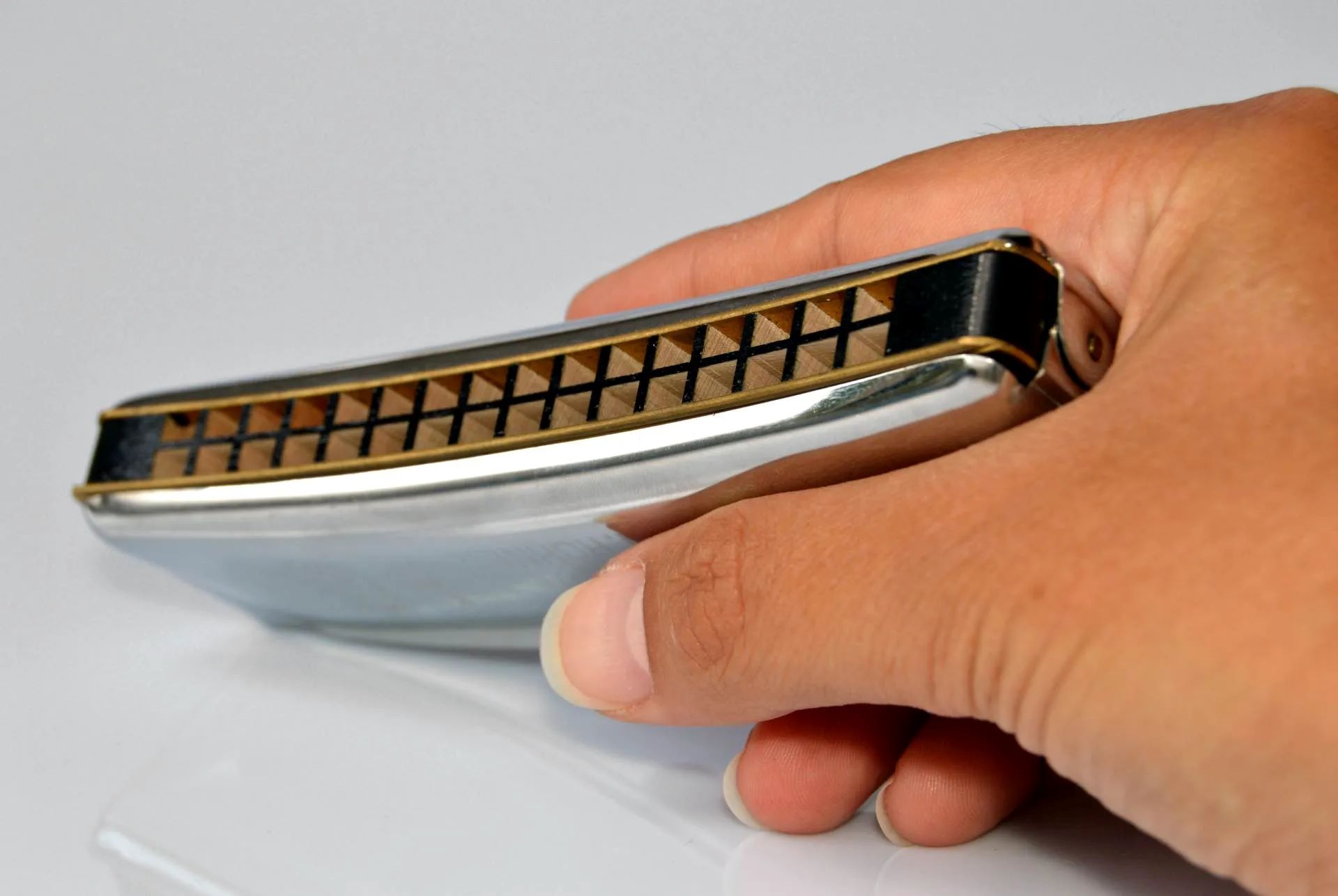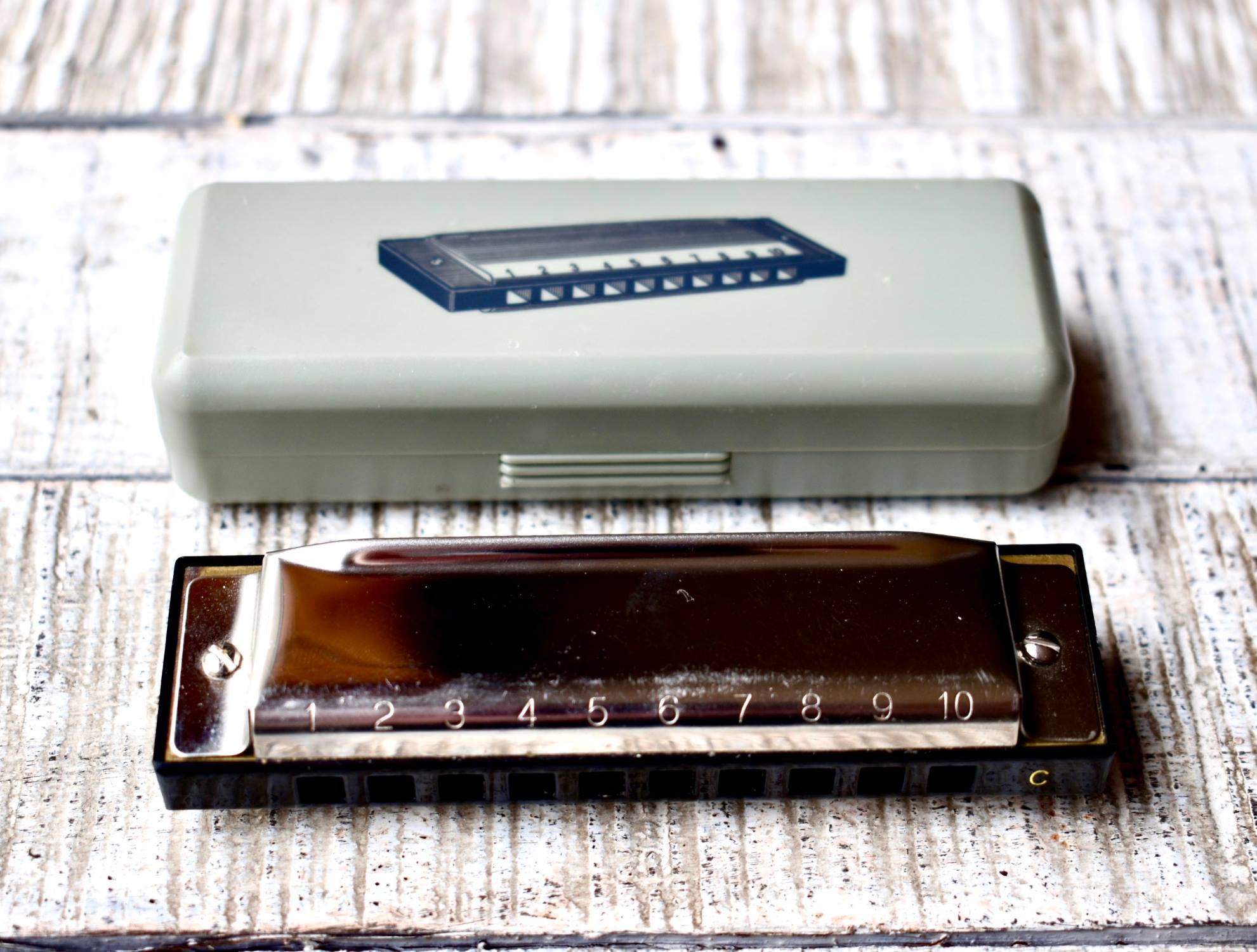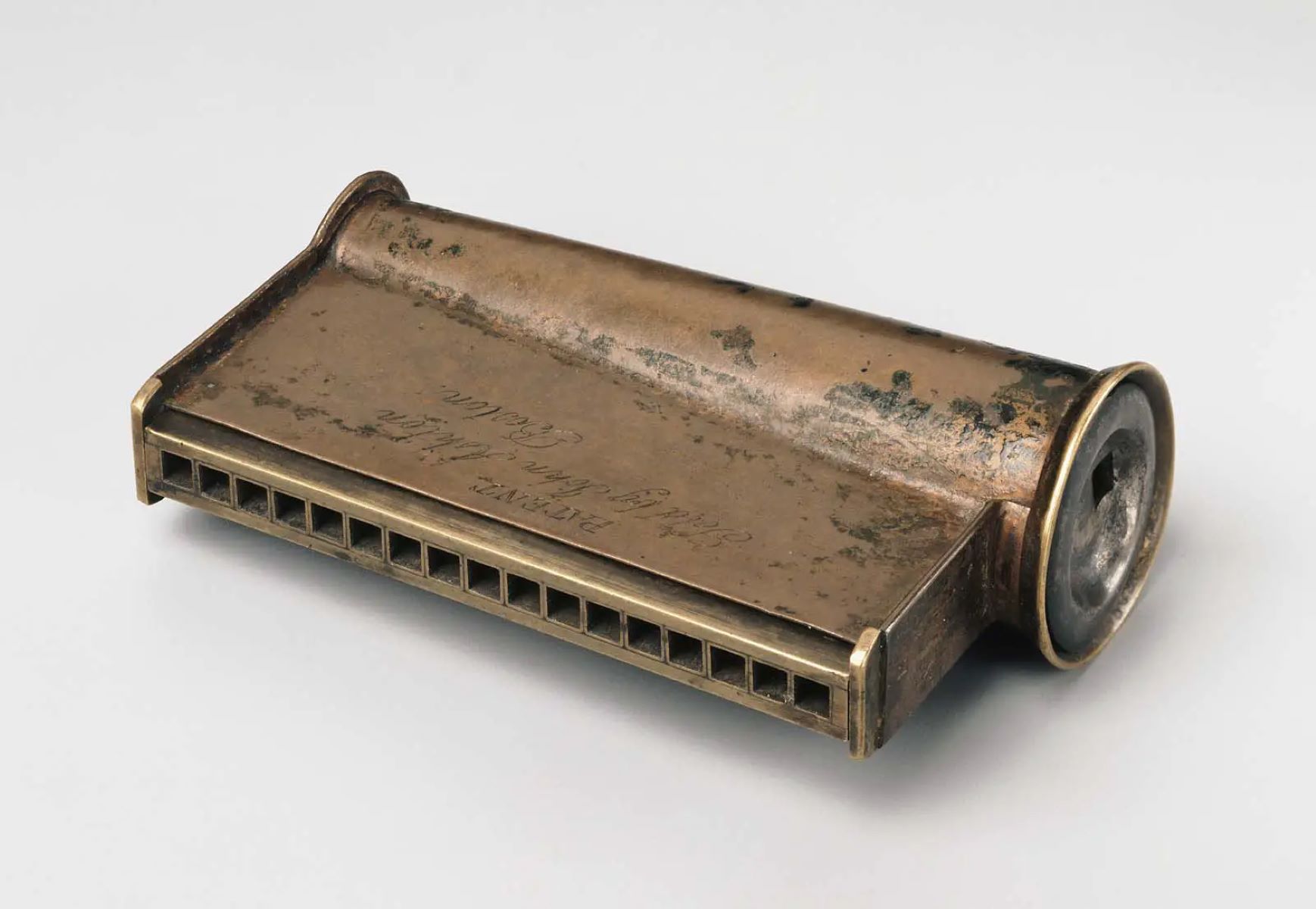Home>Instruments>Harmonica>How To Play Tremolo Harmonica


Harmonica
How To Play Tremolo Harmonica
Published: February 3, 2024
Learn how to play the harmonica with our step-by-step guide. Discover techniques for playing the tremolo harmonica and master the art of harmonica playing.
(Many of the links in this article redirect to a specific reviewed product. Your purchase of these products through affiliate links helps to generate commission for AudioLover.com, at no extra cost. Learn more)
Table of Contents
Introduction
Are you ready to harmonize your way into the world of music? Look no further than the enchanting world of the tremolo harmonica. With its distinct sound and unique playing techniques, the tremolo harmonica offers a special musical experience.
The tremolo harmonica is a type of harmonica that produces a wavering, vibrato-like sound. It has been a beloved instrument in various music genres, including folk, blues, country, and even classical music. Whether you’re a beginner or an experienced musician, learning to play the tremolo harmonica can open up a new world of musical possibilities.
In this comprehensive guide, we will take you on a journey to explore the beauty and intricacies of playing the tremolo harmonica. We will cover everything you need to get started, from understanding the basics to mastering advanced techniques. So grab your harmonica and let’s delve into the wonderful realm of tremolo harmonica playing.
If you’re new to playing harmonica in general, don’t worry! This guide will provide you with all the foundational knowledge you need to confidently pick up this instrument. And if you’re an experienced harmonica player looking to expand your repertoire, we’ve got you covered with tips and techniques to take your playing to the next level.
Throughout this guide, we’ll focus on both the technical aspects of playing the tremolo harmonica as well as the artistic expression that can be achieved. We’ll explore various playing techniques, such as playing single notes, chords, and even mastering tremolo techniques. Plus, we’ll delve into the world of improvisation and soloing to help you develop your unique musical voice.
So, whether you’re looking to play harmonica for personal enjoyment, impress your friends at jam sessions, or even pursue it as a professional career, this guide will equip you with the knowledge and skills to achieve your musical goals. So let’s dive in and embark on this harmonious journey together!
Getting Started
Before we dive into the technicalities of playing the tremolo harmonica, let’s start with the basics. Here are a few essential steps to help you get started on your harmonica journey:
- Choosing the Right Harmonica: The first step is to choose the right tremolo harmonica for you. There are various brands and models available, each with its own unique sound and characteristics. Consider factors such as your budget, musical preferences, and skill level when making your selection.
- Tuning and Key: Tremolo harmonicas come in different tunings, including C, G, and D. The key selection depends on the type of music you want to play. If you’re unsure, starting with a C harmonica is a safe choice as it is widely used and versatile.
- Learning Materials: To kickstart your learning journey, invest in a good harmonica instructional book or online course. These resources will provide you with a structured approach to learning the instrument and teach you the essential techniques step by step.
- Proper Breathing: Harmonica playing involves both inhaling and exhaling while blocking and unblocking specific holes to produce different notes. Practice deep breathing exercises to improve your breath control and maximize your playing efficiency.
- Start with Simple Songs: Begin by learning simple melodies and songs that you enjoy. This will help you familiarize yourself with the harmonica’s layout and develop your ear for music. Don’t be discouraged if you encounter challenges along the way; practice and persistence are essential.
Remember, learning to play the tremolo harmonica is a gradual process, and it’s important to enjoy the journey. Take your time to practice regularly, experiment with different techniques, and most importantly, have fun with the instrument.
In the next sections of this guide, we will delve deeper into the specific techniques involved in playing the tremolo harmonica. We’ll explore how to hold the instrument, play single notes, create chords, and develop various advanced techniques. So, let’s move on to understanding the basics of playing the tremolo harmonica.
Understanding the Basics
Before you start playing the tremolo harmonica, it’s important to familiarize yourself with its basic components and understand how it produces sound. Here are the key components and concepts you need to know:
1. Holes and Chambers: The tremolo harmonica consists of multiple holes and chambers. Each hole corresponds to a specific note, and each chamber is responsible for producing two reeds that are slightly shifted in pitch, creating a tremolo or wavering effect when played together.
2. Blow and Draw: The tremolo harmonica produces sound when you blow or draw air through the holes. When you blow, you’re creating a positive pressure airflow, and when you draw (inhale), you’re creating a negative pressure airflow. Mastering the technique of blow and draw is essential for playing different notes on the harmonica.
3. Reed Plates: The reed plates are thin metal pieces affixed to the top and bottom of the harmonica. They contain the reeds, which vibrate to produce sound when air passes over them. Each reed is responsible for producing a specific note or pitch.
4. Cover Plates: The cover plates are the metal plates that cover the reed plates and holes. They protect the reeds and also act as a resonator to amplify the sound produced by the reeds.
5. Draw and Blow Bends: Bending notes is a technique used to create variations in pitch and expressiveness on the harmonica. Draw bends are achieved by lowering the pitch when drawing (inhaling) on specific holes, while blow bends involve bending the pitch when blowing (exhaling) on certain holes.
By understanding these basic components and concepts of the tremolo harmonica, you’ll have a solid foundation for further exploration and learning. Now, let’s move on to the practical aspects of playing the instrument, starting with how to hold the tremolo harmonica.
Holding the Tremolo Harmonica
Properly holding the tremolo harmonica is crucial for achieving control and comfort while playing. Here are some guidelines on how to hold the instrument:
1. Place your thumb and index finger: Start by holding the harmonica with your left hand. Place your left thumb on the bottom cover plate, near one end, and your left index finger on the top cover plate, near the other end. Keep a firm but relaxed grip on the harmonica.
2. Position the harmonica in your mouth: Place the harmonica’s holes against your lips, covering the holes with your mouth. Align the harmonica parallel to your lips, with the low-pitched notes on your left side and the high-pitched notes on your right side.
3. Tilt the harmonica: Tilt the harmonica slightly upwards, around a 45-degree angle, to allow the sound to project forward and ensure a comfortable playing position.
4. Use your other hand for support: Your right hand is free to support your left hand or to use techniques that require hand movements. You can lightly cup your right hand beneath the harmonica or use it to create effects such as vibrato or wah-wah.
5. Relax your facial muscles: It’s important to keep your facial muscles relaxed while holding the harmonica. Tension in your lips or cheeks can interfere with note production and limit your playing ability. Take deep breaths and consciously relax your facial muscles as you play.
Remember, finding the right positioning and grip may require some experimentation and adjustment based on your comfort and playing style. The goal is to find a comfortable and secure hold that allows you to move freely and produce clear, strong notes.
Now that you have a solid grasp on holding the tremolo harmonica, let’s move on to the next fundamental aspect of playing: producing single notes.
Playing Single Notes
Playing single notes on the tremolo harmonica is the foundation for creating melodies and melodies. Here’s how you can produce clear and distinct single notes:
1. Focus on one hole: Start by selecting a hole on the harmonica. Place your mouth over that hole, covering it completely with your lips. The goal is to create an airtight seal, allowing air to flow only through that specific hole.
2. Isolate the note: Blow gently or draw a controlled breath through the selected hole. It may take some practice to isolate the airflow to one hole, as adjacent holes might sound at the same time initially. Focus on controlling your breath and positioning to produce a clear single note.
3. Increase airflow: Once you can produce a single note consistently, gradually increase the airflow by blowing or drawing more forcefully. This will help you achieve a fuller sound and increase your dynamic range when playing.
4. Practice hole switching: Practice moving from one hole to another to play different notes. Start with adjacent holes and gradually work your way up to skipping holes. This will improve your accuracy and speed in finding the desired notes.
5. Use your tongue and mouth positioning: Experiment with different tongue positions and mouth shapes to further refine your ability to produce clear single notes. Slight adjustments in tongue placement or mouth shape can impact the tone and pitch of the note.
Remember, playing single notes on the tremolo harmonica requires patience and practice. Take your time to develop control and accuracy in producing clear, defined notes. With regular practice, you’ll be able to play melodies, riffs, and solos with confidence.
In the next section, we’ll explore how to play chords on the tremolo harmonica, expanding your musical repertoire even further.
Playing Chords
Adding chords to your harmonica playing can enhance the richness and depth of your sound. Here’s how you can play chords on the tremolo harmonica:
1. Understand chord structure: Chords are formed by playing multiple notes simultaneously. The basic structure of a chord consists of the root note, the third note, and the fifth note of a given scale. For example, in the key of C, a C major chord consists of the notes C, E, and G.
2. Select the appropriate hole combination: On the tremolo harmonica, each hole produces two notes, one slightly flat and one slightly sharp. To play a chord, you’ll need to cover the specific holes that correspond to the notes in the desired chord. Experiment with different hole combinations to find the chords that sound harmonically pleasing to your ear.
3. Use blow and draw: You can play chords by utilizing both the blow and draw techniques. Start by blowing or drawing air through the selected holes to play the notes of the chord. Practice alternating between blows and draws to create different tonal textures and explore the variations in sound.
4. Combine single notes and chords: As you progress in your playing, you can incorporate chords into your melodies and improvisations. Use single notes to play the melody while adding chordal accompaniment at strategic points to create a fuller musical texture. This will add dynamics and complexity to your playing.
5. Learn common chord progressions: Familiarize yourself with common chord progressions in various music genres. Understanding these progressions will help you anticipate and navigate chord changes while playing with other musicians. It will also allow you to create more interesting harmonic patterns in your compositions.
Remember, playing chords on the tremolo harmonica takes practice and a good understanding of music theory. Start by familiarizing yourself with basic chords and gradually expand your chord vocabulary. Regular practice and experimentations will strengthen your chord-playing skills and open up new possibilities in your harmonica playing.
In the next section, we’ll explore essential techniques and exercises to further develop your tremolo harmonica abilities. These techniques will help you refine your playing and take your harmonica skills to the next level.
Practicing Techniques
Consistent practice is essential for improving your skills on the tremolo harmonica. Here are some helpful techniques and exercises to incorporate into your practice routine:
1. Scales and Arpeggios: Practice playing scales and arpeggios in different keys. This will not only improve your finger dexterity but also enhance your understanding of note relationships and help you navigate the harmonica more confidently. Start with simple scales like the major scale and gradually move on to more complex scales and arpeggios.
2. Breath Control: Work on your breath control by practicing sustained notes. Inhale smoothly and exhale steadily to produce long, even notes without interruption. This will help you develop control over note durations and dynamics, allowing for expressive playing.
3. Tongue Blocking and Puckering: Experiment with different tongue techniques, such as tongue blocking and puckering. Tongue blocking involves using the tongue to cover multiple holes, allowing for more complex note combinations and chords. Puckering refers to using the lips to cover a single hole, producing a focused and precise sound. Practice both techniques to expand your range of playing styles.
4. Rhythmic Exercises: Develop your sense of rhythm by practicing rhythmic exercises. Use a metronome or backing tracks to play along and work on your timing. Start with simple rhythms and gradually increase the complexity as your skills progress. This will help you develop a solid rhythmic foundation for playing with other musicians.
5. Transcribing and Repeating Licks: Listen to harmonica players you admire and try to transcribe their licks and solos. Transcribing is a great way to learn new phrases and expand your harmonica vocabulary. Once transcribed, practice playing these licks repeatedly until you can play them fluently. This will improve your technique, tone, and musicality.
6. Jamming and Collaboration: Practice playing with other musicians as often as possible. Jam sessions allow you to apply what you’ve learned in a real-time musical setting, develop your listening skills, and explore different musical styles. Collaborating with other musicians will also help you grow as a harmonica player and expand your musical horizons.
Remember, regular and focused practice is key to improving your tremolo harmonica skills. Set aside dedicated practice time and break down your practice sessions into smaller goals. Take breaks when needed, and always work at a comfortable pace that allows for steady progress. With persistent practice and a passion for learning, your skills on the tremolo harmonica will continue to flourish.
In the next section, we’ll dive into advanced tremolo techniques that will add depth and versatility to your harmonica playing.
Mastering Tremolo Techniques
Mastering tremolo techniques is essential for creating beautiful and expressive music on the tremolo harmonica. Here are some advanced techniques to take your playing to the next level:
1. Tremolo Embellishments: Experiment with various embellishments to add texture and flair to your playing. Techniques like tongue slaps, tongue trills, and fluttering your tongue against the harmonica’s holes can create intricate and dynamic sounds. Practice incorporating these embellishments into your melodies and solos to enhance your musical expression.
2. Overblows and Overdraws: Overblowing and overdrawing are advanced techniques that allow you to play additional notes beyond the harmonica’s regular range. Mastering these techniques opens up new possibilities for playing chromatic scales and accessing extended notes. Dedicated practice and proper technique are crucial to achieving clear and controlled overblows and overdraws.
3. Vibrato Techniques: Vibrato is a technique used to add depth and emotion to your playing. Experiment with different ways of creating vibrato, such as jaw or throat vibrato. Practice applying vibrato to sustained notes and melodies to enhance their expressiveness and give them a more nuanced and soulful quality.
4. Bending Techniques: Bending notes is a fundamental technique in harmonica playing that allows you to produce pitch variations and achieve bluesy and expressive tones. Practice bending notes both by drawing and blowing, and gradually work on achieving half-step bends and even micro-bends for more subtle tonal variations. Bending is a skill that requires patience, listening, and consistent practice to master.
5. Double Stops and Chordal Playing: Double stops involve playing two notes simultaneously on the harmonica, creating harmonies and chordal textures. Explore different combinations of notes to create rich and resonant sounds. Additionally, practice playing chords in different positions on the harmonica to expand your chordal vocabulary and add depth to your playing.
6. Dynamics and Articulation: Pay attention to dynamics and articulation in your playing. Experiment with varying the intensity, volume, and attack of your notes. Develop control over the volume and articulation by exploring breath control techniques, tongue placement, and tongue-blocking variations. This will allow you to create expressive and dynamic performances.
Remember, mastering tremolo techniques takes time and dedication. Regular practice, listening to harmonica players you admire, and experimenting with different techniques will help you develop your unique style and deepen your musicality on the tremolo harmonica.
In the next section, we’ll explore the captivating world of vibrato and its application on the tremolo harmonica.
Experimenting with Vibrato
Vibrato is a beautiful technique that adds depth, warmth, and expressiveness to your harmonica playing. It creates a subtle wavering effect on sustained notes, infusing your music with emotion and character. Here’s how you can experiment with vibrato on the tremolo harmonica:
1. Jaw Vibrato: Jaw vibrato is one of the most common techniques used to create vibrato on the harmonica. To practice jaw vibrato, you gently move your jaw side-to-side or up-and-down while maintaining a steady airflow. Start by producing a sustained note and gradually introduce the jaw movement to create a subtle vibrato effect.
2. Throat Vibrato: Throat vibrato is another technique to explore for a different vibrato sound. It involves creating a controlled pulsation in the throat while playing sustained notes. This technique requires relaxation and coordination of the muscles in your throat. Practice throat vibrato by experimenting with different throat movements and finding a rhythm that creates a pleasing vibrato effect.
3. Hand Vibrato: Hand vibrato is a technique where you use your hand to create a vibrato effect by gently shaking or waving it near the harmonica. This technique can be used to add depth and variation to your playing. Experiment with the distance between your hand and the harmonica to achieve different vibrato speeds and intensities.
4. Experiment with Vibrato Speed and Depth: Vibrato comes in various speeds and depths, allowing for a wide range of musical expressions. Practice varying the speed and depth of your vibrato to match the mood of the music you’re playing. Slow, subtle vibrato can create a gentle and haunting effect, while faster, deeper vibrato can evoke a more energetic and soulful feel.
5. Apply Vibrato to Different Notes and Phrases: Experiment with applying vibrato to different notes and phrases in your melodies. Try using vibrato on sustained notes, as well as on shorter phrases. This will add texture and emotion to your playing. Listen to recordings of harmonica players known for their vibrato technique and study how they use vibrato to enhance their musicality.
6. Combine Vibrato with Other Techniques: Vibrato can be combined with other techniques, such as bending, tongue-blocking, and chordal playing, to create even more expressive and nuanced performances. Explore the possibilities of incorporating vibrato into your repertoire of techniques and use it to add depth and emotion to your harmonica solos and improvisations.
Remember, vibrato is a personal expression of your musicality. Experiment with different techniques and find a vibrato style that suits your playing style and musical preferences. Practice regularly and listen to harmonica players who have mastered the art of vibrato for inspiration and guidance.
In the next section, we’ll delve into playing melodies on the tremolo harmonica, allowing you to showcase your musicality and create captivating harmonica performances.
Playing Melodies
Playing melodies on the tremolo harmonica is where you can truly showcase your musicality and create captivating harmonica performances. Here’s how you can approach playing melodies:
1. Learn the Melody: Start by learning the melody of the song you want to play. Listen to recordings or use sheet music as a reference. Break down the melody into smaller sections and practice each section until you can play it comfortably.
2. Use the Tremolo Effect: The tremolo effect of the harmonica adds a unique and enchanting quality to melodies. Experiment with sustaining notes, using vibrato, and incorporating tremolo techniques like tongue slaps and trills to add depth and emotion to your melodies.
3. Focus on Articulation: Pay attention to the articulation of each note. Use techniques like tongue-blocking and drawing or blowing more forcefully to emphasize certain notes. This can help bring out the nuances and dynamics of the melody.
4. Play with Expression: Use your breath control, dynamics, and vibrato to infuse the melody with expression. Pay attention to phrasing and dynamics, accentuating certain notes to highlight the melodic structure and convey the intended mood of the song.
5. Experiment with Variations: Once you feel comfortable with the melody, try adding your own variations and ornamentations. This can include bending notes, adding trills, or incorporating tasteful improvised passages. Use your musical intuition to explore different possibilities and make the melody your own.
6. Play in Different Keys: Practice playing melodies in different keys to expand your musical versatility. Start with familiar melodies and transpose them to different keys using the notes available on your harmonica. This will help you become more comfortable playing in different tonalities and broaden your repertoire.
Remember, playing melodies on the tremolo harmonica is a creative and expressive process. Practice regularly, listen to different interpretations of melodies by various artists, and explore your own unique style. With time and dedication, you’ll be able to captivate your audience with beautiful and soulful harmonica melodies.
In the next section, we’ll explore the art of improvisation and soloing, allowing you to unleash your creativity and take your harmonica playing to even greater heights.
Improvising and Soloing
Improvisation and soloing add a whole new dimension to your harmonica playing, allowing you to express yourself freely and create unique musical moments. Here are some tips to help you master the art of improvisation and soloing on the tremolo harmonica:
1. Learn Scales and Chord Progressions: Having a strong foundation in scales and chord progressions is crucial for improvisation. Practice scales in different keys, and study common chord progressions in various music genres. This knowledge will provide you with a framework to create melodies and solos that fit harmonically.
2. Develop Your Ear: Train your ear to recognize different melodies, chord changes, and musical patterns. Listen to a variety of music, paying attention to the harmonica solos in particular. Transcribe solos by ear and study how harmonica players use scales, arpeggios, and melodic patterns in their improvisations.
3. Feel the Rhythm: Improvisation is not just about playing notes. It’s about interpreting and responding to the rhythm of the music. Develop your sense of rhythm by practicing with a metronome or playing along with backing tracks. Pay attention to syncopation, accents, and phrasing to create a compelling and rhythmic solo.
4. Experiment with Phrasing and Dynamics: Use phrasing and dynamics to add color and emotion to your solos. Play with a mix of short and long phrases, varying the intensity and volume of your notes. Experiment with techniques like bends, vibrato, and tongue-slaps to add texture and expressiveness to your playing.
5. Space and Silence: Don’t be afraid of silence. Leaving spaces between phrases can be just as powerful as playing notes. Give your solos room to breathe and allow the music to have moments of anticipation and release. This will create a sense of depth and musicality in your improvisations.
6. Play with Confidence: Improvisation is about trusting your instincts and letting your musical intuition guide you. Play with confidence, even if you make some mistakes along the way. Embrace the spontaneity of improvisation and use any errors as opportunities to explore new musical ideas.
Remember, improvisation is a skill that develops over time with practice and experience. Start by experimenting with simple improvisations over familiar chord progressions, and gradually expand your vocabulary and techniques as you gain confidence. Embrace the joy of creating music in the moment and let your harmonica tell its unique story.
In the next section, we’ll provide some helpful tips to enhance your overall playing and ensure you continue to grow as a tremolo harmonica musician.
Tips for Better Playing
No matter your skill level, there’s always room for improvement in your tremolo harmonica playing. Here are some tips to help you enhance your overall playing and continue to grow as a musician:
1. Practice Consistently: Dedicate regular time to practice the tremolo harmonica. Consistency is key to building muscle memory, improving technique, and expanding your musical repertoire. Set specific goals for each practice session and track your progress over time.
2. Explore Different Genres: Don’t limit yourself to just one genre of music. Expand your musical horizons by exploring different genres like blues, folk, jazz, and classical. Each genre has its unique playing style and techniques that can enrich your harmonica playing.
3. Record and Listen to Yourself: Record your practice sessions and performances, and listen back to them critically. This will help you identify areas for improvement and track your progress. Listening to yourself will also enable you to analyze your tone, timing, and phrasing, allowing you to refine your playing.
4. Attend Workshops or Take Lessons: Consider attending harmonica workshops or taking lessons from experienced harmonica players. Learning from a teacher or participating in workshops can provide valuable guidance, feedback, and insights that will help you take your playing to the next level.
5. Play with Other Musicians: Seek opportunities to play with other musicians. Whether it’s joining a band, participating in jam sessions, or collaborating with other musicians, playing with others will improve your listening skills, sense of timing, and ability to adapt to different musical contexts.
6. Embrace Your Own Style: While it’s essential to learn from others, don’t be afraid to develop your own unique style. Experiment with different techniques, explore new sounds, and let your personality shine through your playing. Embrace your strengths and use them to create a distinctive musical voice.
7. Enjoy the Process: Playing the tremolo harmonica should ultimately be a fulfilling and enjoyable experience. Embrace the journey of learning, exploring, and creating music. Celebrate your progress and find joy in every practice session and performance. Remember, it’s the love and passion for the instrument that will drive you to become a better harmonica player.
By incorporating these tips into your harmonica journey, you’ll continue to grow, develop your skills, and expand your musicality on the tremolo harmonica. Embrace the process, be patient with yourself, and let the harmonica be your guide to endless musical possibilities.
As we conclude this comprehensive guide, we hope it has provided you with valuable insights, techniques, and inspiration to embark on your tremolo harmonica playing adventure. Now, it’s time to unleash your creativity, explore your musicality, and let the harmonica’s enchanting sounds captivate audiences and bring joy to your musical journey.
Conclusion
Congratulations! You have completed this comprehensive guide to playing the tremolo harmonica. Throughout this journey, we have covered everything from the basics to advanced techniques, allowing you to develop a strong foundation and unlock your full potential on this enchanting instrument.
By understanding the components of the tremolo harmonica, mastering techniques like playing single notes and chords, experimenting with vibrato, and diving into the world of improvisation and soloing, you are now equipped with the knowledge and skills to create beautiful melodies and express your musicality with confidence.
Remember, playing the tremolo harmonica is a continuous learning process. Regular practice, exploration of different genres, collaboration with other musicians, and enjoying the experience are all key elements to further developing your skills.
Continue to challenge yourself by learning new melodies, exploring different musical styles, and incorporating your own unique style into your playing. Embrace the journey of discovery and allow your harmonica to become an extension of your musical voice.
Lastly, never forget the essence of playing the tremolo harmonica—to create and share joy through music. Whether you’re performing for audiences, playing with fellow musicians, or simply enjoying the music in solitude, let the harmonica be your vehicle for expression and connection.
So, take what you’ve learned, embrace your creativity, and embark on your musical adventure with the tremolo harmonica. Immerse yourself in the enchanting sound and continue to explore the limitless possibilities it offers.
Thank you for joining us on this harmonica journey. May your passion for music and the tremolo harmonica bring you endless inspiration, fulfillment, and countless harmonious moments. Happy playing!











